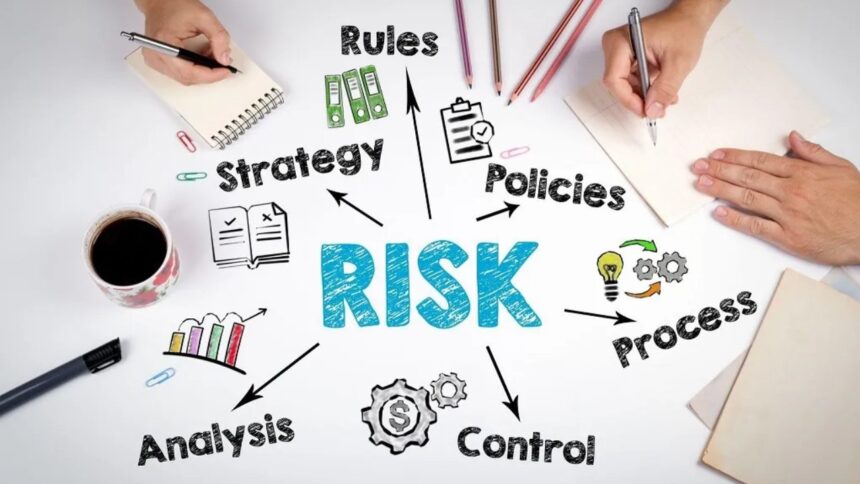Business risk is the possibility that a business will cause problems or lose money within a certain period of time.
Business risks are events that may occur when running a business. However, business actors can identify the causes of risk. Business actors can mitigate risks to reduce the impact that occurs, so that losses can be minimized.
This article discusses business risk, including its definition, types, causes, and methods to mitigate it.
Related Article:
- What is Business Analyst and its Important Role With IT jobs
- 8 Top Skills for Business AnalystDefinition of Manufacturing, Types and Examples
- How to Analyze Competitor Website SEO
What is Business Risk?

Business risks are inseparable from business operations, small, medium and large enterprises are all prone to risks. So, what is meant by business risks that are inseparable every time a business is run?
Business risk refers to the negative outcomes or losses that can occur as a result of a business or activity. Companies with higher exposure to business risk are more likely to face losses.
Internal and external factors, such as natural disasters, economic disruptions, etc. also contribute to business risk. Therefore, a company must be able to detect business risks as early as possible to minimize losses.
It turns out that a business can detect the risks that will occur in its business if it is familiar with the types of risks and the causes of business risks.
Types of Business Risks
You should be aware of the types of business risks that are common to many businesses or companies to identify any potential business risks. The following are examples of different types of business risks:
Strategic Hazards
Strategic risk refers to a type of business risk that commonly emerges during a company’s operations. In this type of risk, the business deviates from its pre-existing plan.
When a company deviates from the original plan, the strategy used will not be effective. Because it has not made a plan for the activities they are doing.
An example of this business risk is Laptop X’s decision to release its first model without a touchscreen. But it turns out that consumer preferences have shifted, and they now prefer laptops with touchscreen capabilities.
In this way, Y Laptop Company is exposed to business risks that they must manage as effectively as possible. Even if it doesn’t go according to the original plan, X Laptop Company will adhere to consumer feedback to ensure the products they offer are on point.
Operational Hazards
Operational risk refers to internal business risks that occur due to failures or errors in operational processes, leading to a substandard end product.
Usually, operational risks come from malfunctioning production machinery or its workforce. In order for the production process to run as usual, a business must think of solutions to operational risks early on.
Financial Risk
Financial risk is one of the many risks that if it continues can result in losses for the company. This financial risk has a close relationship with the company’s financial condition.
Global economic events, rising interest rates on loans, and lack of cash flow are examples of financial risks that businesses face. To reduce your company’s financial risks, you should implement risk management and reduce expenses and debt.
Technology Risk
Technology risk refers to the potential harm or negative impact that can occur to a business as a result of technological advancements. With the continuous development of technology, the risk of data theft is becoming more prevalent.
Therefore, every business must know all its business data so that it is not stolen by irresponsible people. Because if the company data is stolen, the company will experience difficulties in the future.
Competition Risk
Competitor risk is one of the business risks that all professionals must manage effectively. Due to the highly competitive nature of the business world, there will always be competitors present whenever you run a company.
Companies are obliged to release new innovations and be aware of the trends of society. Make sure that every product released is always up-to-date and in demand by consumers, so as to make the company stand out from its competitors.
Business Risk Classification

This text discusses the different classifications of business risks, including dynamic risk, pure risk, and speculative risk, based on the losses they can cause. The following section provides further explanation on these classifications.
1. Pure Risk
Business risks known as pure risks are risks that have a high degree of certainty that they will result in a loss. However, if it does not, there will be no profit or loss.
For example, if the assets of a business are destroyed in a fire, it will suffer a huge loss and may go bankrupt. But there will be no loss or profit if there is no fire in the company.
Speculative Risk
Speculative risk, which falls under the category of business risk, occurs when a company takes poorly thought-out actions or decisions that can potentially harm its operations.
In reality, speculative risk presents two opportunities: profit and loss. If a business makes the right decision, the company will benefit, and vice versa. An illustration of speculative risk is debt.
Dynamic Risk
Dynamic risk is a business risk caused by technological advances. If a company cannot guarantee the security of the technology it uses, then there is a risk of theft of sensitive company information.
Factors Causing Business Risk
The origins of business risks can be caused by internal or external issues. So, what are the sources of enterprise risk? Among the sources of enterprise risk are the following:
Natural Disasters
Outside of business, natural disasters are a source of business risk. Due to their unpredictable occurrence, natural disasters are risks that companies cannot control or detect.
The Covid-19 pandemic has led to many businesses failing due to the lack of long-term income.
Economic Issues
All business activities, whether small or large, are closely related to the economic activities of a country. Consequently, if a country’s economy experiences a downturn or problem, it will impact a large number of operating businesses.
When a country implements policies that may exacerbate the effects of an already high inflation rate, this is an example of business risk posed by economic problems. As a result, a business is forced to raise the price of its products in response to increased demand.
Human behavior
Human behavior is a type of internal business risk. This is caused by inappropriate business policies or decisions. As a result, consumer confidence evaporates, payables pile up, and cause other problems.
Business Risk Mitigation
After understanding the causes, the next step in mitigating business risks is for each business actor to implement a risk mitigation strategy.
1. Acceptance
Acceptance is a strategy used by businesses to manage risk, by allowing it to happen if it is not significant or unlikely to occur.
2. Avoidance
Avoidance is when businesses take measures to prevent risks from happening, as these risks can have a major impact and require significant investment to address.
3. Limitation
Limitation refers to the anticipation of a significant business risk that cannot be avoided, but its impact can be reduced.
That’s all the information we can convey about the types, classification, and mitigation of business risks, hopefully it will be useful.







